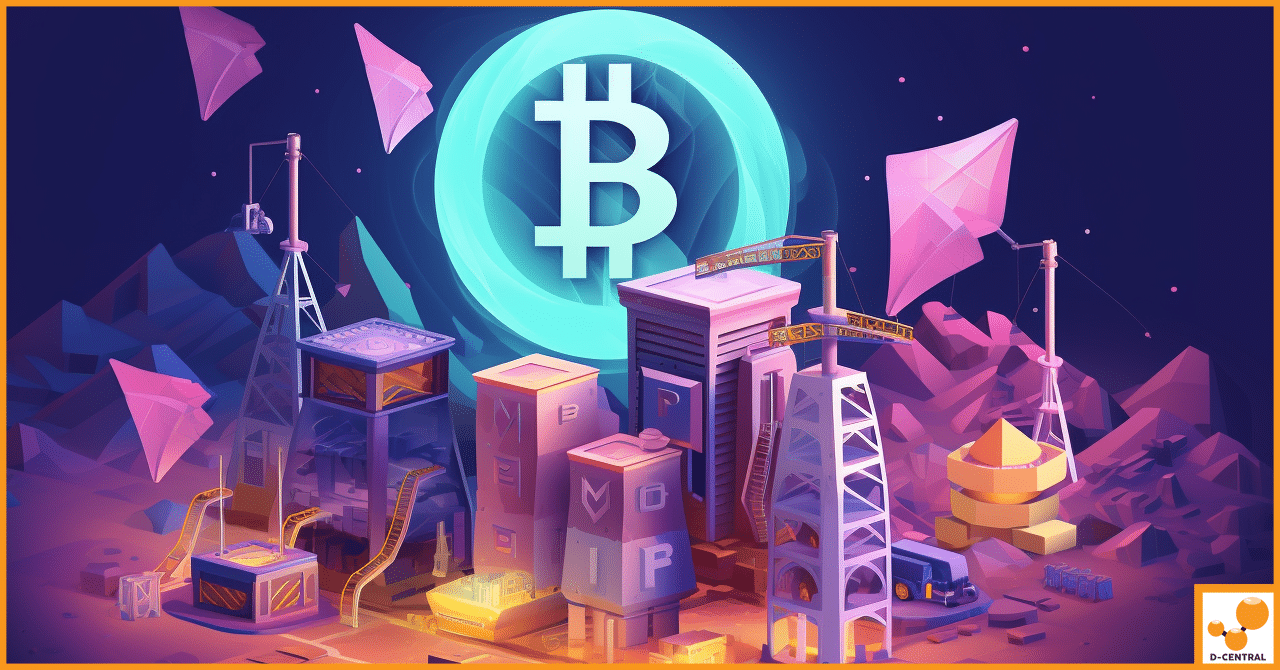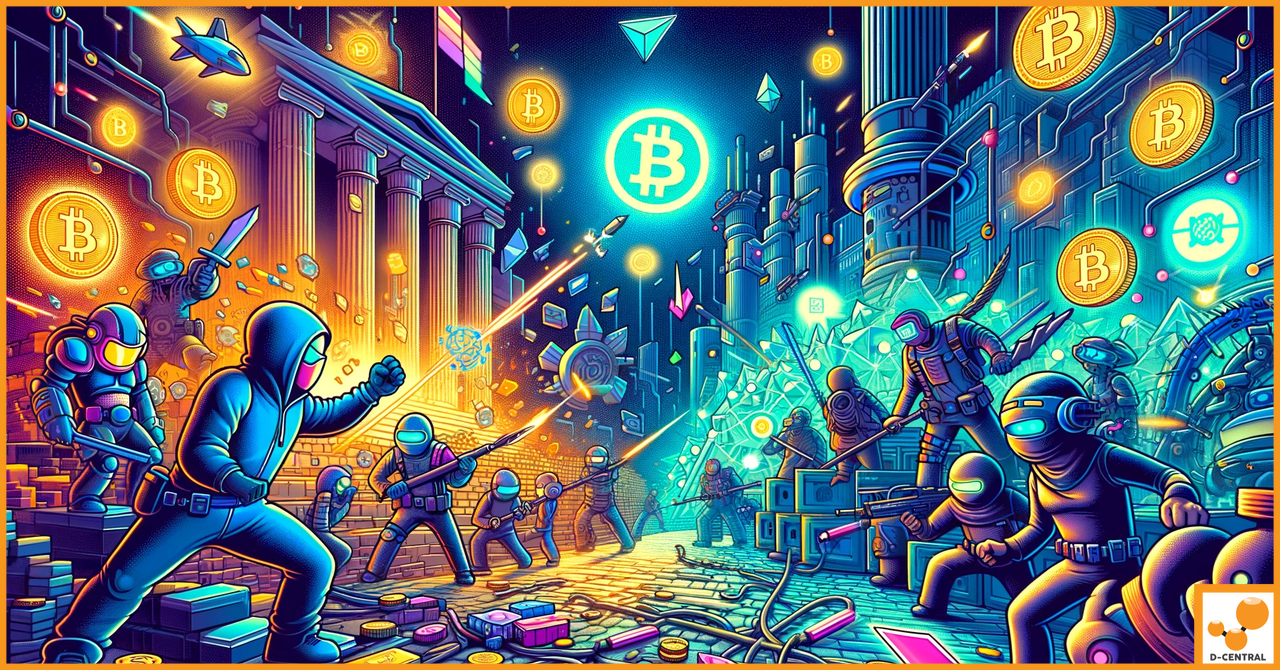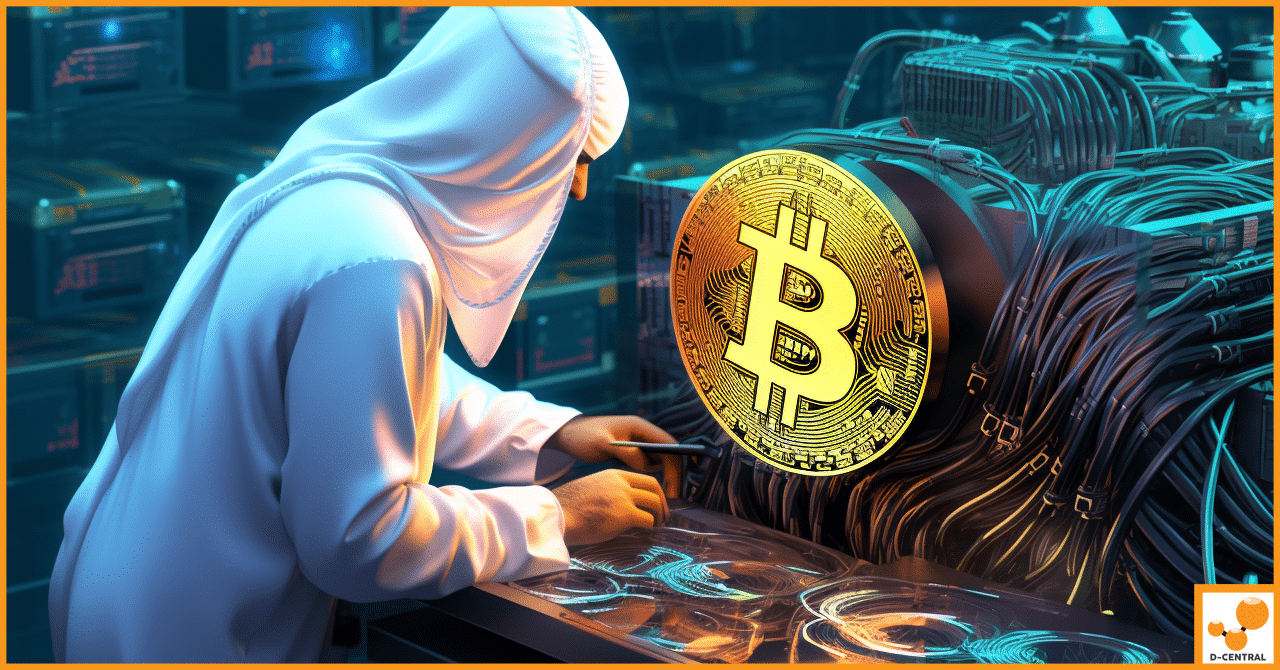
Blockstream’s Mining Rig: Reshaping Bitcoin Mining in 2024
In the dynamic world of Bitcoin mining, Blockstream has established itself as a significant player. Founded by Dr. Adam Back,
4479 Desserte Nord Autoroute 440, Laval, QC H7P 6E2

Since its inception, Bitcoin has stood at the forefront of the digital currency revolution, embodying a vision of decentralized, peer-to-peer monetary exchange. At its core, Bitcoin has always been primarily a monetary settlement layer, a digital gold standard in the ever-expanding universe of cryptocurrency. This fundamental characteristic has guided its development and the community’s expectations, shaping its role as a reliable and secure medium for financial transactions.
However, the journey of Bitcoin has been marked by continuous technological evolution, pushing the boundaries of what’s possible within its blockchain framework. A significant milestone in this journey was the introduction of the Taproot upgrade, a leap forward in Bitcoin’s capabilities, opening doors to new possibilities. Among these are the BRC-20 tokens and Ordinals, innovations that have sparked both interest and debate within the Bitcoin community.
BRC-20 tokens, drawing inspiration from Ethereum’s ERC-20 standard, and Ordinals, which facilitate the creation of unique digital assets or NFTs, have introduced a new dimension to Bitcoin’s blockchain. While these advancements showcase Bitcoin’s potential beyond simple monetary transactions, they also bring into question the balance between innovation and the blockchain’s original purpose.
Despite the diverse opinions surrounding these new features, the current consensus rules of the Bitcoin network stand clear. They validate the transactions involving BRC-20 tokens and Ordinals, recognizing them as legitimate uses of the blockchain. This acknowledgment by the consensus rules is a testament to Bitcoin’s foundational principles of openness and resistance to censorship. It underscores the network’s commitment to supporting a broad spectrum of applications and uses, even as it continues to serve as a steadfast monetary settlement layer.
Bitcoin, since its creation by Satoshi Nakamoto, has been primarily envisioned and utilized as a digital currency and a settlement layer. Its design and architecture are centered around providing a decentralized alternative to traditional fiat currencies, enabling peer-to-peer transactions without the need for intermediaries. This fundamental aspect of Bitcoin is rooted in its whitepaper and has been the guiding principle behind its development and adoption.
The blockchain technology underlying Bitcoin ensures transparency, security, and immutability of transactions, making it an ideal platform for monetary exchange and settlement. The fixed supply of 21 million bitcoins also adds to its appeal as a ‘digital gold,’ providing a hedge against inflation and currency devaluation, a feature that has attracted investors and users seeking a store of value.
As a settlement layer, Bitcoin offers a trustless system where transactions are verified and recorded on a public ledger, accessible to all network participants. This aspect of Bitcoin is crucial for its role in financial transactions, where trust and security are paramount. The settlement layer functionality of Bitcoin has been instrumental in its adoption by various sectors, including remittances, online payments, and as a reserve asset for individuals and institutions.
The introduction of BRC-20 tokens and Ordinals, enabled by the Taproot upgrade, presents a new paradigm in Bitcoin’s functionality. These developments allow for the creation of tokenized assets and unique digital collectibles (NFTs) on the Bitcoin blockchain, functionalities that were traditionally associated with platforms like Ethereum.
While these innovations showcase the versatility and adaptability of Bitcoin, they also raise questions about the impact on its core functionality as a monetary settlement layer. The inclusion of BRC-20 tokens and Ordinals could lead to increased demand for block space, potentially resulting in higher transaction fees and longer confirmation times for traditional monetary transactions. This scenario could challenge Bitcoin’s efficiency as a settlement layer, particularly for smaller, everyday transactions.
Moreover, the shift towards supporting a broader range of applications, including tokenized assets and NFTs, might divert attention and resources from Bitcoin’s primary role as a digital currency. It raises a fundamental question about the direction of Bitcoin’s evolution: Should the network prioritize its foundational purpose as a monetary settlement layer, or embrace a more expansive role that includes supporting various types of digital assets?
The Bitcoin ecosystem witnessed a significant evolution with the introduction of BRC-20 tokens and Ordinals, enabled by the Taproot upgrade. This upgrade, a major milestone in Bitcoin’s history, enhanced the blockchain’s scripting capabilities and privacy features, laying the groundwork for more complex applications.
BRC-20 Tokens: Drawing parallels with Ethereum’s ERC-20 tokens, BRC-20 tokens represent a new class of assets on the Bitcoin blockchain. They are fungible tokens, meaning each token is identical and interchangeable, similar to how one Bitcoin is equal to another. BRC-20 tokens can represent a wide range of assets, from digital currencies to shares in a company, and open up possibilities for tokenization on the Bitcoin network.
Ordinals: Ordinals introduce a different kind of innovation. They allow for the inscription of non-fungible tokens (NFTs) directly onto individual satoshis, the smallest unit of Bitcoin. Each Ordinal is unique, carrying distinct information that could range from digital artwork to text. This uniqueness makes Ordinals akin to NFTs on other blockchains, but with the security and decentralization of Bitcoin.
The Taproot upgrade was instrumental in enabling these functionalities. It introduced more sophisticated smart contract capabilities to Bitcoin, allowing for greater flexibility and efficiency in executing complex transactions. This upgrade made it feasible to embed additional data into transactions, a feature that BRC-20 tokens and Ordinals heavily rely on.
BRC-20 Tokens: The current usage of BRC-20 tokens in the Bitcoin ecosystem is still in its nascent stages. However, they have the potential to transform how assets are issued and managed on the blockchain. From creating new digital currencies to tokenizing real-world assets, BRC-20 tokens could significantly expand the utility of the Bitcoin network.
Ordinals: Ordinals have garnered attention for bringing the concept of NFTs to Bitcoin. They are being used to inscribe a variety of digital assets onto the blockchain, from artworks to collectibles. This has opened up a new avenue for creators and collectors to interact with the Bitcoin ecosystem, though it also raises questions about the use of block space and the network’s primary function.
The emergence of BRC-20 tokens and Ordinals within Bitcoin’s ecosystem has reignited discussions about the optimal use of its blockchain. Given Bitcoin’s primary role as a monetary settlement layer, there’s a growing consensus that building projects like BRC-20 tokens and Ordinals might be more suited to subsequent layers rather than the main blockchain. This approach aligns with the layered architecture model, where the base layer (Bitcoin’s blockchain) maintains its primary function of secure and decentralized transactions, while subsequent layers handle more complex applications.
Lightning Network: The Lightning Network is a prominent second-layer solution designed to facilitate fast and low-cost transactions. It operates on top of the Bitcoin blockchain, enabling off-chain transactions that are settled on the main blockchain once the channel is closed. This layer is particularly effective for handling small, frequent transactions, thereby reducing the burden on the main blockchain and keeping transaction fees low.
Liquid Network: Another notable second-layer solution is the Liquid Network, a sidechain-based settlement network for traders and exchanges. It offers faster transaction settlements and enhanced privacy features. Liquid supports the issuance of assets, including tokenized fiat, securities, and other cryptocurrencies, providing a more suitable environment for projects like BRC-20 tokens.
Building projects like BRC-20 tokens and Ordinals on these subsequent layers rather than the main blockchain has several advantages:
The current state of these second-layer solutions shows significant promise but also highlights areas for growth:
The role of subsequent layers in Bitcoin’s ecosystem is increasingly vital, especially with the introduction of new functionalities like BRC-20 tokens and Ordinals. These layers offer a more appropriate environment for such innovations, ensuring that the main blockchain remains efficient and true to its primary purpose. As the Bitcoin ecosystem continues to evolve, the development and adoption of these layered solutions will be crucial in balancing innovation with the foundational principles of Bitcoin.
In the ever-evolving landscape of Bitcoin, market forces play a pivotal role in shaping the network’s usage and development. One of the most significant market dynamics in this context is the fluctuation of on-chain transaction fees. As Bitcoin continues to grow in popularity and usage, the network experiences varying degrees of congestion, leading to spikes in transaction fees. These fluctuations are not merely indicators of network activity but also powerful drivers that influence user behavior and technological adoption within the Bitcoin ecosystem.
When on-chain fees rise, users and businesses are naturally incentivized to seek more cost-effective alternatives for their transaction needs. This economic pressure guides activities towards layers where transactions can be processed more efficiently and at a lower cost. In essence, high on-chain fees act as a catalyst, accelerating the adoption of second-layer solutions and sidechains that offer more economical transaction options.
Businesses and individual users alike have adapted to these market conditions in various ways:
Market forces, particularly the fluctuation of on-chain fees, play a crucial role in guiding the Bitcoin ecosystem towards more economically viable layers. This natural progression underscores the adaptability of the Bitcoin network and its users in responding to economic stimuli. As the ecosystem continues to mature, the interplay between market dynamics and technological innovation will remain a key factor in shaping the future of Bitcoin transactions and the broader adoption of its layered solutions.
As a leader in the Bitcoin mining industry, D-Central Technologies has been at the forefront of adapting to the evolving landscape of Bitcoin. The company’s approach to Bitcoin’s evolution, particularly in response to the challenges posed by high on-chain fees and the emergence of new transaction methods, reflects a blend of pragmatism and adherence to Bitcoin’s core principles.
While adapting to these changes, D-Central remains committed to the foundational principles of Bitcoin:
D-Central’s approach to Bitcoin’s evolution is characterized by a proactive adaptation to market forces and a steadfast commitment to the cryptocurrency’s foundational principles. By balancing the need for operational efficiency with the ethos of decentralization and censorship resistance, D-Central positions itself not just as a participant in the Bitcoin ecosystem but as a guiding force, shaping the future of Bitcoin mining and its applications in a rapidly evolving digital economy.
The journey of Bitcoin, from its inception as a revolutionary digital currency to its current status as a multifaceted blockchain ecosystem, underscores a constant theme: the need for balance. This balance is not just about maintaining Bitcoin’s integrity as a monetary settlement layer but also about embracing the technological innovations that continue to emerge within its framework.
D-Central Technologies’ approach to these developments reflects a deep understanding of Bitcoin’s ethos and market realities. By adopting efficient transaction methods and supporting clients through education and optimization, D-Central not only adapts to the changing landscape but also contributes to shaping it, all while upholding the principles of decentralization and censorship resistance.
As we look to the future, the Bitcoin ecosystem stands at a crossroads of sorts, with potential paths diverging toward different models of functionality and innovation. The decisions made by the community, businesses, and developers in the coming years will shape the trajectory of this ecosystem. The ongoing dialogue between preserving Bitcoin’s foundational purpose and exploring new technological frontiers will continue to be a driving force in its evolution.
In conclusion, the future of Bitcoin’s ecosystem is not set in stone but is a dynamic narrative being written by its diverse and active community. The balance between preserving its integrity as a monetary settlement layer and embracing innovation will remain central to this narrative, guiding Bitcoin’s journey in the digital age.
What is Bitcoin’s primary function?
Bitcoin’s primary function is to serve as a decentralized, peer-to-peer monetary exchange system, acting as a monetary settlement layer and digital gold standard within the cryptocurrency space.
What are BRC-20 tokens and Ordinals in the Bitcoin ecosystem?
BRC-20 tokens are akin to Ethereum’s ERC-20 tokens and represent fungible tokens that can be used to represent a range of assets on the Bitcoin blockchain. Ordinals are a method for creating unique digital assets or NFTs by inscribing data onto individual satoshis.
How did the Taproot upgrade affect Bitcoin’s capabilities?
The Taproot upgrade introduced improved scripting capabilities and privacy features to the Bitcoin blockchain, enabling more complex applications like BRC-20 tokens and Ordinals.
How do market forces such as transaction fees impact the Bitcoin ecosystem?
Fluctuations in on-chain transaction fees influence user behavior and technological adoption, guiding activities toward more economically efficient layers like the Lightning Network and Liquid Network for transactions.
What is the Lightning Network?
The Lightning Network is a second-layer solution that facilitates fast, low-cost transactions on top of the Bitcoin blockchain. It’s especially effective for small, frequent transactions.
What is the Liquid Network?
The Liquid Network is a sidechain-based settlement network for traders and exchanges, offering fast transaction settlements and enhanced privacy. It supports the issuance of various digital assets.
How does D-Central Technologies approach Bitcoin’s evolution?
D-Central Technologies approaches Bitcoin’s evolution by integrating efficient transaction methods, such as the Lightning Network, into its operations and by educating and supporting its clients about these methods. It optimizes mining operations and upholds Bitcoin’s core principles of censorship resistance and decentralization.
DISCLAIMER: D-Central Technologies and its associated content, including this blog, do not serve as financial advisors or official investment advisors. The insights and opinions shared here or by any guests featured in our content are provided purely for informational and educational purposes. Such communications should not be interpreted as financial, investment, legal, tax, or any form of specific advice. We are committed to advancing the knowledge and understanding of Bitcoin and its potential impact on society. However, we urge our community to proceed with caution and informed judgment in all related endeavors.
Related Posts

In the dynamic world of Bitcoin mining, Blockstream has established itself as a significant player. Founded by Dr. Adam Back,

In a galaxy far, far away, the Galactic Empire sought to maintain its grip on the universe through an intricate

Bitcoin mining is a critical component of the Bitcoin network. It involves the use of high-powered computers, typically specialized hardware